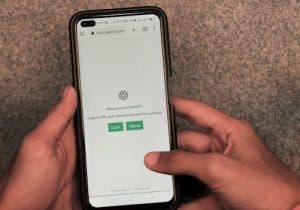Collaborative Teaching Models That Work
Are you tired of the traditional, one-size-fits-all teaching models that leave students feeling disengaged and uninterested? Do you long for a more dynamic and collaborative classroom experience? Look no further, because in this article, we will explore the most effective collaborative teaching models that are revolutionizing education. These models not only promote active learning and critical thinking but also foster a sense of community and teamwork among students. So, let’s dive into the world of collaborative teaching and discover the models that really work.
The Power of Collaboration in Education
A collaborative teaching model is an approach to instruction that involves students working together to achieve a common goal, whether it’s solving a problem, creating a project, or discussing a topic. This method prioritizes teamwork, communication, and sharing of ideas, rather than the traditional teacher-led approach where students are passive listeners. By incorporating collaboration into the classroom, we are preparing our students for the ever-changing and interconnected world they will enter after graduation.
Moreover, research shows that collaborative learning leads to better academic achievement, improved problem-solving skills, increased retention of information, and higher self-esteem among students. By actively engaging in discussions and working together, students are more likely to understand and remember the material, as well as develop important social skills. With these benefits in mind, let’s explore some of the most effective collaborative teaching models being implemented in classrooms around the world.
Project-Based Learning (PBL)
Project-Based Learning is a student-centered approach that revolves around a project or real-life problem. In this model, students work in groups to research, design, and present a solution or product that addresses the project’s requirements. This model not only promotes collaboration but also allows students to apply their knowledge in a practical and meaningful way. PBL also encourages critical thinking, as students must analyze information and make decisions together to complete the project successfully.
Example of a PBL lesson:
A high school class is tasked with designing a sustainable community. Students must work together to research and propose a plan that includes green energy sources, environmentally friendly transportation options, and ways to reduce waste. They must also consider the economic, social, and cultural impacts of their community. This project involves collaboration, critical thinking, and real-world problem-solving skills.
Cooperative Learning
In a cooperative learning model, students work in small groups to complete a shared task or project. Each member of the group is responsible for a specific role or task, and they must work together to achieve a common goal. This model emphasizes teamwork, communication, and individual accountability. It also allows students to learn from one another and gain a deeper understanding of the material by explaining it to their peers in their own words.
Example of a cooperative learning activity:
A middle school science class is studying the water cycle. The teacher divides the class into groups of four and assigns each member a role: researcher, illustrator, presenter, and group leader. Each group must create a presentation that explains the water cycle and its importance using their specific roles. The researcher must gather relevant information, the illustrator must create diagrams and visuals, the presenter must deliver the presentation, and the group leader must ensure that all members contribute and collaborate effectively.
Flipped Classroom
In a flipped classroom model, students learn the material at home through videos, readings, or other resources before coming to class. During class time, students work together on collaborative activities and projects that allow them to apply and deepen their understanding of the material. This model allows for a more active and engaging classroom experience, as students are no longer passive recipients of information but active participants in their learning.
Example of a flipped classroom lesson:
A high school math class is learning about fractions. The teacher assigns videos and practice exercises for students to complete at home. In class, students work together in small groups to solve real-world problems involving fractions, such as dividing a pizza equally among a group of friends or calculating the ingredients for a recipe. This model allows for a more personalized and interactive learning experience, as students can ask questions and receive immediate feedback from their peers and teacher.







